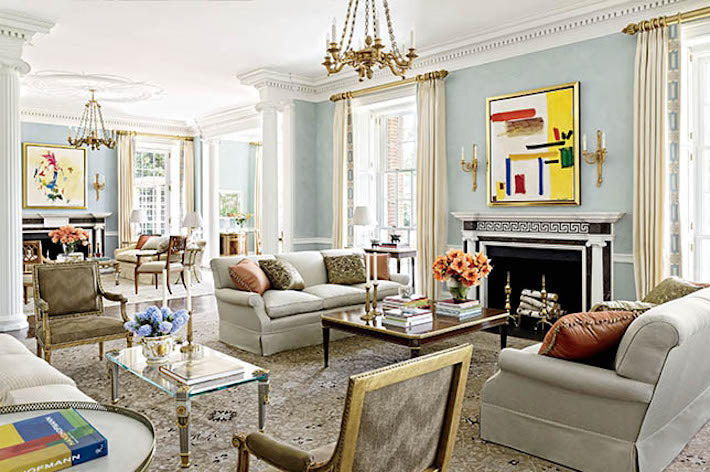
In the world of interior design, the blending of old and new is an art form. Through it, designers and homeowners can capture the timeless elegance of vintage styles while incorporating the sleekness and functionality of modern elements. Here’s how to navigate this delicate balance.
Table of Contents
Setting the Scene: Understand Your Space
Assessing the Architecture
Every space carries a unique architectural signature. Some homes boast high ceilings and ornate moldings that echo a bygone era, while others have a contemporary feel with clean lines and expansive windows. Before introducing furniture and decor, it’s essential to respect the room’s inherent architectural language. In older buildings, the classic moldings, rosettes, and parquets can serve as an anchor for modern furniture, creating a delightful contrast. Conversely, in a newer space, vintage elements can offer warmth and a touch of history.
Defining the Mood and Function
While aesthetics are pivotal, functionality should not be compromised. The ambiance you wish to create—be it a tranquil bedroom sanctuary or an energetic living area—dictates the fusion approach. For instance, a modern kitchen might demand the latest appliances for efficiency. However, integrating a vintage wooden island or antique pendant lights can bring a nostalgic touch without sacrificing function.
Curating the Right Blend of Furniture
Vintage Statement Pieces
One of the joys of vintage decor is the history and character each piece brings. An aged wooden chest, an Art Deco side table, or a mid-century modern chair can serve as focal points around which the room revolves. These items have a tale, a palpable past. By juxtaposing these with sleek, contemporary pieces, you not only preserve their story but also create a fresh narrative for your space.
Modern Accents and Essentials
Modern design, characterized by its streamlined forms and innovative materials, brings efficiency to daily living. Consider, for example, a modular couch with hidden storage or a minimalist coffee table with adjustable heights. These elements, when harmoniously combined with vintage pieces, provide comfort without compromising on style.
Marrying Textures and Materials
Celebrating Patina and Polish
The beauty of vintage materials lies in their lived-in feel—the chipped paint, the worn-out leather, the oxidized metals. These textures evoke emotions and memories. On the other side, modern design celebrates refinement and sleekness. Shiny metals, smooth marbles, and polished woods. By layering these contrasting textures within a space, a tactile richness emerges, creating depth and visual interest.
Construction Reinventions
When it comes to adapting vintage spaces for modern use, there’s often a need for structural modifications. For instance, a derelict factory being transformed into residential lofts might require reinforcement for safety. Modern tools, such as the reinforcement bar bender, ensure that while preserving the space’s original charm, the structural integrity is uncompromised. It’s the perfect blend of respecting history while embracing modern technology.
Intertwining Modern and Vintage Decor
Art: From Classics to Contemporary
Art is an avenue where the past and present can seamlessly merge. A classic renaissance painting might find its place in a room with ultra-modern furniture, drawing the eye and sparking conversations. Conversely, a bold contemporary sculpture or abstract painting can elevate a room filled with antique furnishings, offering a refreshing counterpoint.
Accessorizing with Purpose
While large furniture pieces often anchor a room, accessories breathe life into it. A vintage Persian rug might sit beneath a modern glass table, or contemporary abstract cushions might adorn a classic Victorian sofa. These seemingly small touches play a pivotal role in tying the room’s design elements together, creating a cohesive look.
Navigating Color Choices
Timeless Neutrals
Neutrals have the innate ability to bridge styles. Soft beiges, muted grays, and classic whites can serve as the backdrop, allowing both vintage and modern elements to shine. They provide a sense of continuity, ensuring that the space feels harmonized.
Bold and Retro Accents
Dashes of color can ignite a space. Retro shades from past decades—think of the vibrant teals of the ’60s or the earthy browns of the ’70s—can be revived in a modern setting. Simultaneously, using sleek blacks, metallic silvers, or deep navy in a predominantly vintage setting can provide a delightful twist.
Conclusion
Combining vintage charm with modern sensibilities requires a keen eye and a sensitive touch. It’s about resonating with history while echoing contemporary sensibilities. When executed with care, understanding, and perhaps the help of modern tools like the reinforcement bar bender, such fusion results in spaces that are both deeply personal and aesthetically captivating.
